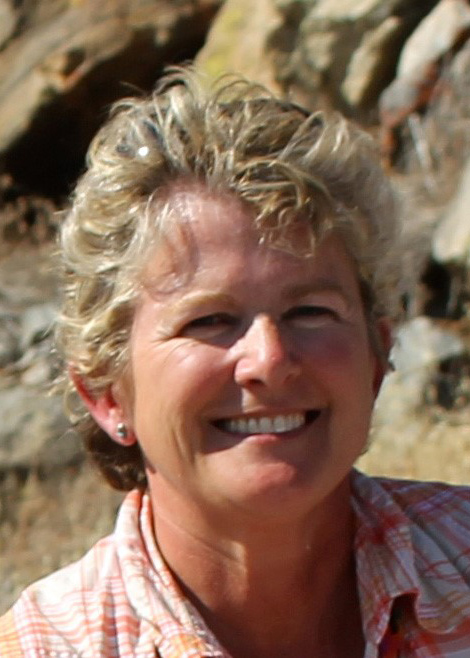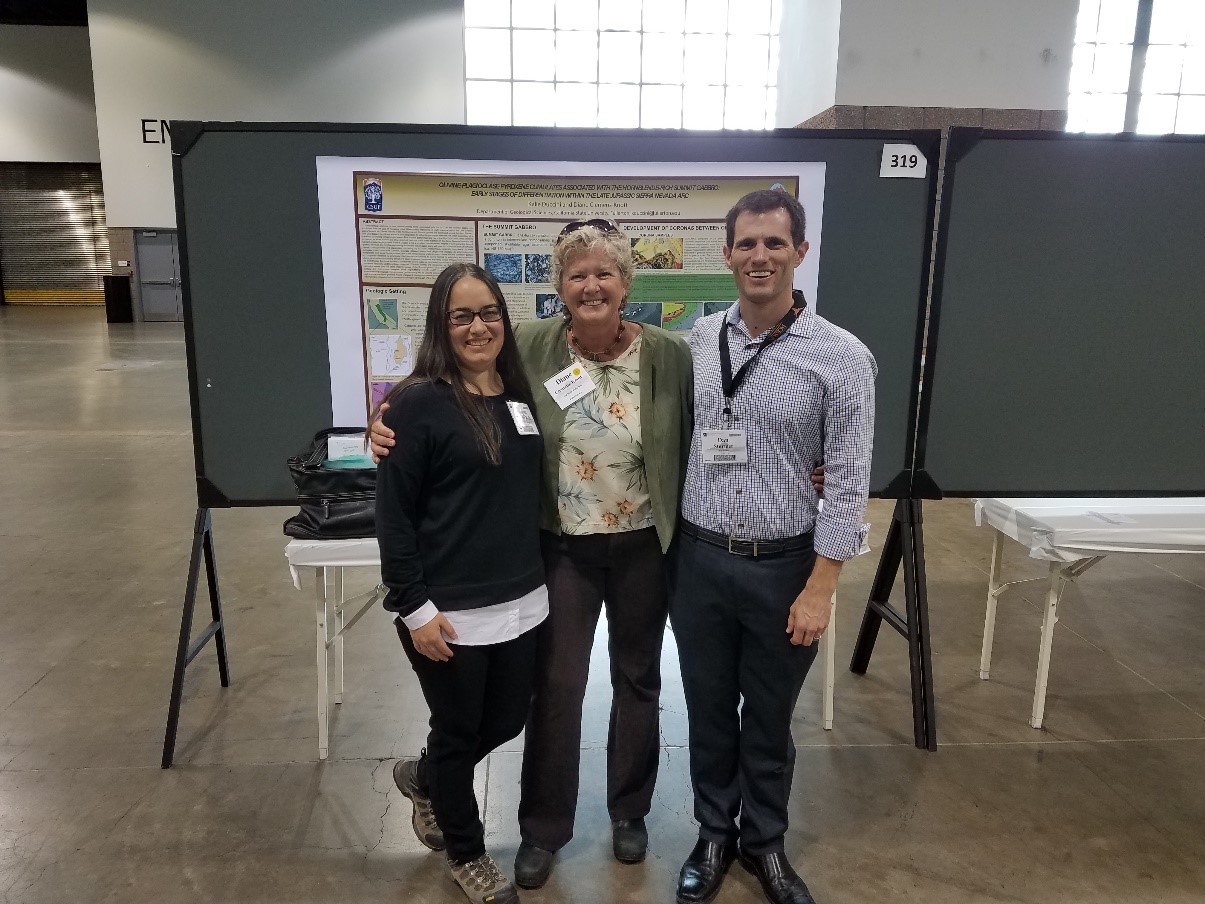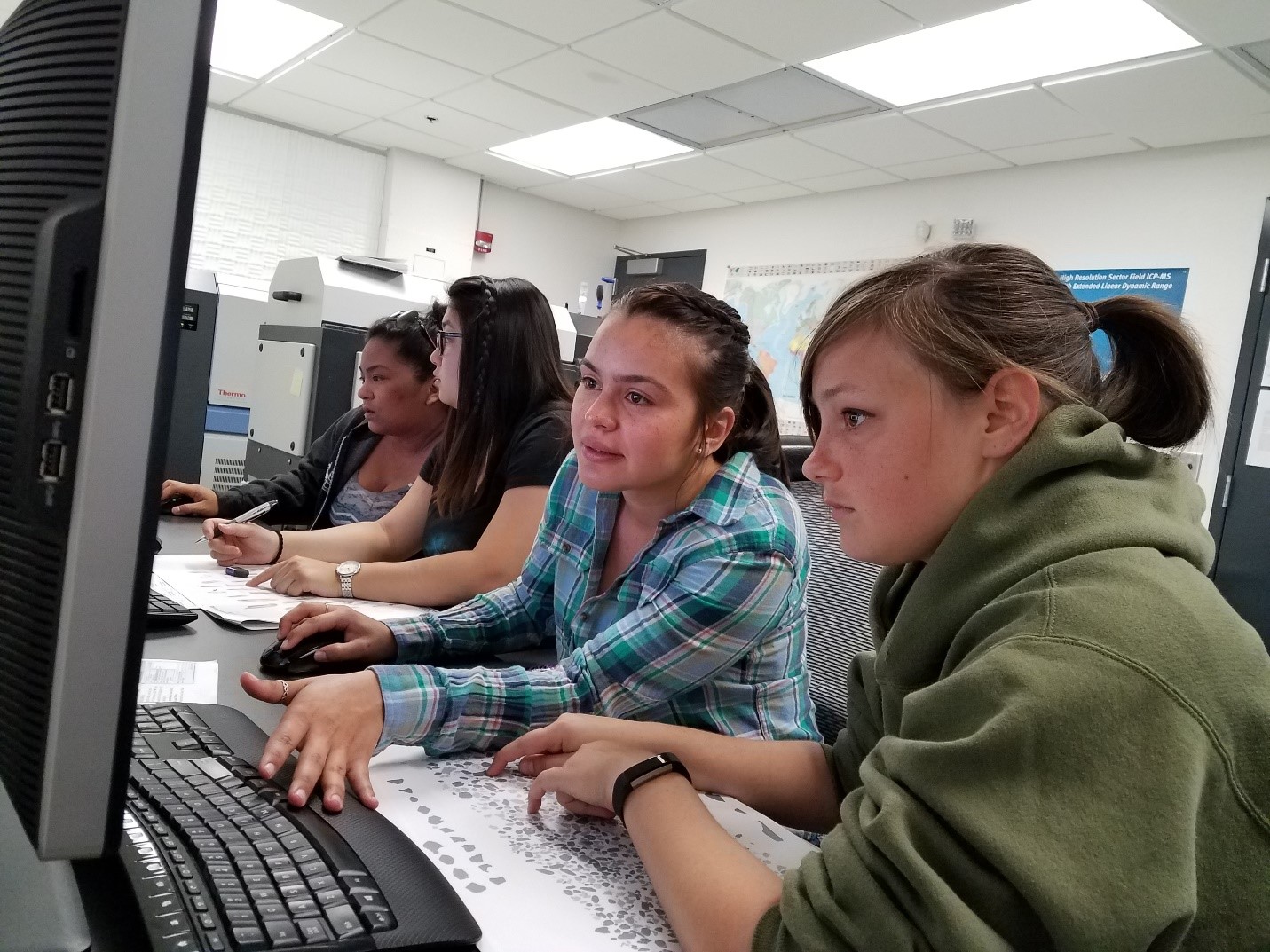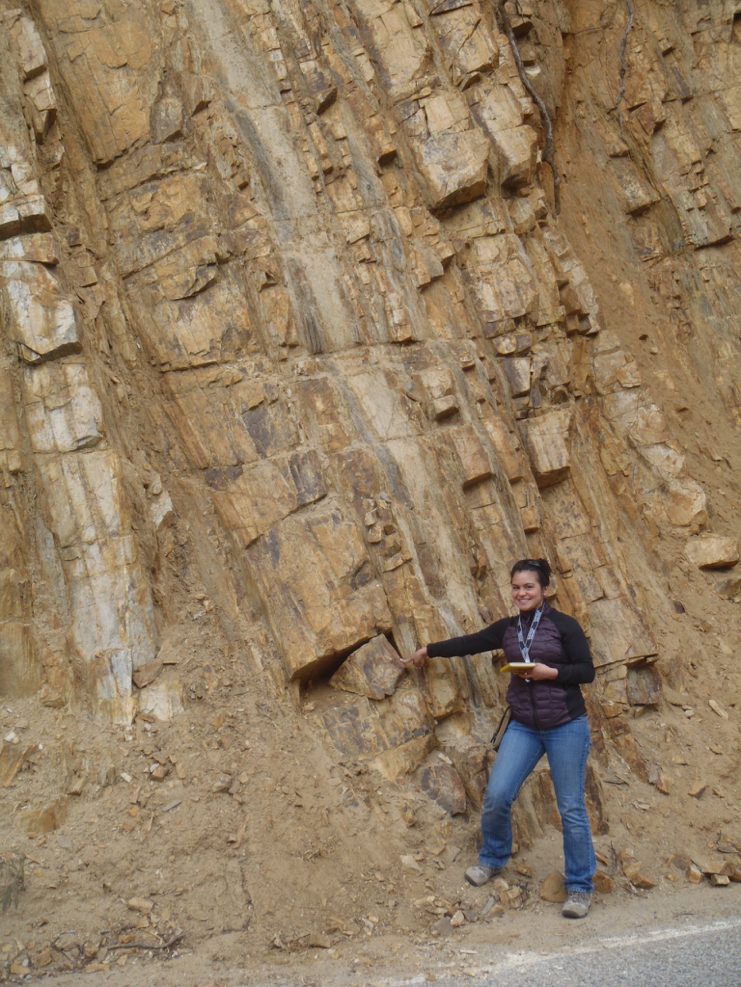Dr. Diane Clemens-Knott
 Department of Geological Sciences
Department of Geological Sciences
California State University, Fullerton
Testing Models for the Formation of the Great Valley Basin using Detrital Zircon U/Pb Dates: An Early Cretaceous Forearc Basin or a Mid-Jurassic Pull-Apart Basin?
Dr. Diane Clemens-Knott and her students are investigating the geologic record of sediment deposition and tectonism along the western margin of North America. Eastward subduction of ocean floor during the Mesozoic Era formed the igneous rocks of the Sierra Nevada Mountains, with sediments eroded from the Sierra Nevada volcanic arc being deposited in the Great Valley fore-arc basin of California.
Her current PRF grant provides support for mapping and characterizing metamorphic pendants—scraps of recrystallized sedimentary rocks that were engulfed by the younger hot magmas. Her goal is to determine whether the distribution of different types of pendants might hold information regarding the formation of the Great Valley basin, host to one of the nation’s largest petroleum reserves. Because fossils are rarely preserved in these metamorphosed rocks, which have been “cooked and deformed by magmas over 180 million years” of arc volcanism, sediment ages can only be determined by a relatively new technique.
Detrital zircon analysis using laser ablation mass spectrometry allows for the rapid determination of U-Pb dates on tiny samples. Statistical analysis of large numbers of tiny zircon sand grains separated from a single rock provides a constraint of the sediment deposition age as well as a characterization of the sources of the eroded sediment. Combining depositional ages and sediment provenance forms the basis for comparison of metasedimentary rocks to undeformed sedimentary strata in neighboring regions. The ultimate goal is to correlate these “truly messed-up sedimentary rocks” found in the metamorphic pendants of the Sierra Nevada with their presumed original depositional basins and then determine the history of faulting and lateral movement, which may amount to hundreds to thousands of kilometers.
The inspiration for this research occurred during work on a previous PRF grant, which allowed Clemens-Knott to obtain familiarity with dating zircon sand grains and to explore this method’s utility for characterizing metamorphosed sedimentary rocks. This first project in the western foothills of the Sierra Nevada Mountains resulted in documentation of some of the oldest non-marine sedimentary rocks in California: records of ancient rivers that carried sediment from the volcanic arc to the Great Valley fore-arc basin during Cretaceous time. She notes that, “in the process of this field work, a landowner invited us to take samples from their property, which contained some rocks exotic to the area.”
These results motivated Clemens-Knott to shift her field work to the southwestern Sierra Nevada Mountains where she’s been able to access areas previously “off-limits” to geologists. She states that, “I’ve been working in the western part of the Sierra Nevada since the late 1980’s, and almost all of this area is private ranch land. Because I was able to develop personal relationships with landowners, this network of people who trusted me served as a reference for people who didn’t know me, granting me and my students access.”
Notably, last year the Tule River Tribal Council allowed Clemens-Knott and her students to work in the eastern portion of the Tule River Indian Reservation, an area that had not been mapped since the early 1960’s. She relates that, “I petitioned the Tribal Council for an audience. Going before the Council enabled me to explain what I wanted to do, and make sure that nothing I did—either while I was there or with the information I obtained—would be incompatible with their laws and desires. Field-based research must respect the people who own and manage the land.”
A surprising finding of her current project was discovery of an ancient plate collision zone in an unmapped area of rugged terrain. Once she and her team finish their field sampling and the University of Arizona lab work, along with the statistical comparison of different pendants to each other and to possible source areas, Clemens-Knott intends use these data to assess existing tectonic models for the pre-arc structural evolution of the western margin of North America, including the Great Valley fore-arc basin.
She notes that she and her PRF-funded colleagues at California State University, Fullerton “are grateful for PRF funding, which has helped all of our students, regardless of their grades, to become involved in research. This helps them move to whatever the best next step is, whether it’s graduate school or professional work. Contributing to their personal and professional growth is what keeps me going.”
Two CSUF undergraduate students supported by her first PRF grant both now have their PhDs and are teaching petroleum geology and sedimentology. In fact, Daniel Sturmer—an Assistant Professor at the University of Cincinnati—now has a PRF “starter grant” of his own. Clemens-Knott mused, “I’m an igneous petrologist. How does that happen [that my students become sedimentologists]?! It happened because of PRF. Much of this stemmed from their PRF experience.”
According to Clemens-Knott, “In the course of my own research training, I already had the tools necessary to mentor geochemists and students studying magmas, but it was PRF that put me in the position to expose future Earth scientists to sedimentology, petroleum geology, groundwater flow, and even structural geology.”
Clemens-Knott received a B.S. from UCLA, and spent a year mapping for the Bureau of Western Mineral Resources of the U.S. Geological Survey before returning to graduate school. She received M.S. and Ph.D. degrees in Geology from the California Institute of Technology before joining the faculty of California State University Fullerton. Currently Professor and Chair of the Department of Geological Sciences, she recently served as the Chair of the Board of Directors of the Cordilleran Section of the Geological Society of America. She has received several awards from the CSUF College of Natural Sciences and Mathematics for Outstanding Research and Teaching, and co-convened a November 2011 session on PRF-funded Research, held at the ACS Western Regional meeting.
Grant #56245-UR8: Read Clemens-Knott's Annual Report
 Meeting poster at GSA Denver (Fall 2016) with two former CSUF undergraduates and co-authors of results from first PRF-funded project (Geosphere, 2013):
Meeting poster at GSA Denver (Fall 2016) with two former CSUF undergraduates and co-authors of results from first PRF-funded project (Geosphere, 2013):- Dr. Dolores van der Kolk (left) is now a Senior Lecturer at Texas State University teaching petroleum geology, and sedimentation and stratigraphy.
- Dr. Daniel Sturmer (right) is now an Assistant Professor of basin dynamics at the University of Cincinnati.
 April 2017 CSUF students collecting data at the Arizona Laserchron Center (University of Arizona) (from left) Jazmine Titular (B.S.), Nancy Chen (M.S.); Rosa Murietta (B.S); Kalie Duccini (M.S.)
April 2017 CSUF students collecting data at the Arizona Laserchron Center (University of Arizona) (from left) Jazmine Titular (B.S.), Nancy Chen (M.S.); Rosa Murietta (B.S); Kalie Duccini (M.S.) July 2017 undergraduate field crew on the Kern Plateau, southern Sierra Nevada(from left) Christian Concha, Rodrigo Aviles, Brian Magumcia
July 2017 undergraduate field crew on the Kern Plateau, southern Sierra Nevada(from left) Christian Concha, Rodrigo Aviles, Brian Magumcia












